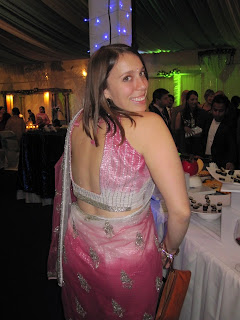People (especially business school interviewers) constantly ask me about the differences between India and America, between Indians and Americans. One of the biggest differences I have noticed here is the level of spirituality in this country. I think India is one of the only places I have ever been where saying "I am going on a pilgrimage this weekend" will not elicit laughter. Several of my analysts have taken 20km+ hikes to reach famous shrines with their families, even with their friends, on weekend trips. It's something I can barely get my head around.
I have been told several times by my friends that I am "the friend most likely to be struck by lightning upon entering a church" so they would be shocked that I agreed to go on a pilgrimage of sorts with my co-workers. A group of 20 or so of us from work decided to head northwest of Delhi to the Punjab region a few weekends ago. Our destination: Amritsar. Amritsar is known for two things: the border ceremony with Pakistan and the Golden Temple.
The border ceremony is an intriguing spectacle-- half sports event, half changing of the guard. The ceremony takes place in Amritsar on the Indian side and a bit outside of Lahore on the Pakistan side. People pack the stands on both sides to watch, each country cheering their soldiers on. Then the soldiers have a mirror-image dance-off. Okay, it's more of a ceremony with some high steps; but it certainly looks like a dance-off to me. Dressed in uniforms with flamboyant helmets, they do these crazy marches with their legs flying way high in the air (another thing that is different between our countries: Indians are better dancers than Americans). Each side sings chants in support of their country and their guards. I think the Indians won...though I am biased. I am still debating who would win in a US border dance-off: I think we could out-dance the Canadians, but I am not certain about the Mexicans.
The Golden Temple is the most holy site of the Sikh religion. It's also the most beautiful man-made site I've seen in India. That includes the Taj Mahal in case you're wondering. We visited really late in the evening when they were putting their religious book to bed. We stepped into the complex (shoes removed and heads properly covered, of course) and there in the middle of a moat stood the temple, gold emanating from its roof and sides, reflecting off the water around it. It was awe-inspiring. The worshippers were extremely friendly, welcoming us, sharing the special sweet they give to all worshippers, and teaching us about the holy complex. I have never felt spirituality more, between the wonder of the temple and the devotion of its worshippers. Perhaps India really is getting to me....












